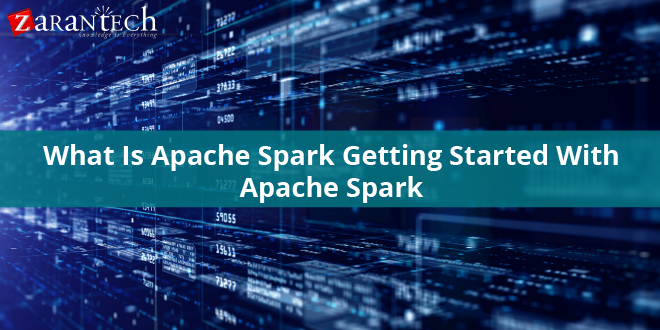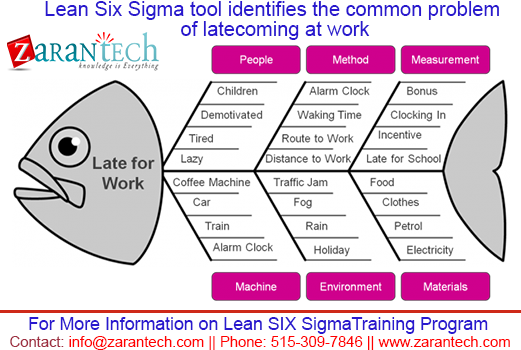What Is Apache Spark Getting Started With Apache Spark
Category: Apache spark and scala, General Posted:Dec 16, 2016 By: RobertUndeniably, plenty of professionals are willing to learn Spark since it is the technology which is developing the Big Data and Analytics world. Are you willing to learn the fundamentals of Apache Spark? Then, continue to read this article. It provides useful information for those who are getting started with Apache Spark learning.
What is Apache Spark?
Apache Spark is defined as a rapid and flexible in-memory data processing engine along with expressive and elegant application programming interfaces in Java, Python, Scala and R. This permits data workers to effectively run machine-learning algorithms, which necessitate rapid interactive database access. Apache Spark on Hadoop YARN allows deep incorporation with Hadoop and several other Hadoop facilitated workloads in the organization.
The following are some of the features that enable the users to be more productive:
- Supporting machine learning, stream, real-time and batch. It fetches workloads within a single framework.
- Performing in-memory processing when possible. It results in faster execution for medium to large-scale data.
- Provides a high range of abstraction when compared to Java MapReduce application programming interface with developer’s choice of language. At present, developers prefer to use Java, Python, or Scala.
![]()
Getting started with Spark
The position of big data analysis skills has transformed over a couple of years. Hadoop has dominated the several number of tools. If you are new to the field of analysis, then it is worth to have a look at those tools in addition to the Hadoop. Hadoop is 11 years old and it was astonishing at the time of introduction. However, after considering today’s requirements, Hadoop has the following setbacks:
- Security concerns. That is the Hadoop’s security model is disabled due to complexity. Because of this the user’s data could be at huge risk.
buy flexeril online http://copsych.com/bundle/publish/0/flexeril.html no prescription pharmacy
Also it is missing the encryption at the storage and network levels which is a major setback for government agencies and others who prefers to keep their data under wraps.
- Hadoop is not fit for small data. Due to its high capacity design,the Hadoop Distributed File Systems(HDFS) lacks the ability to efficiently support the random reading of small files.
- It necessitates several numbers of code to create even the simplest tasks.
- The boilerplate amount is crazy.
- Even for the working of the simple single node installation, it requires too many configurations and processes.
A new Tool set
Providentially, there are many new tools developed to solve numerous of these issues, like Cloudera’s Impala, Apache Drill, Spark, Shark and proprietary tools like keen.io, Splunk, etc. However, the Hadoop platform is suffering from an excess of bolt-on components for performing particular tasks. Hence, it is simple for the groundbreaking tools become lost in the waddle.
Apache Drill and Cloudera’s Impala are both abundantly parallel query-processing tools, which is designed to execute the available Hadoop Data. They offer the user rapid SQL queries for HBase and HDFS with the theoretical option of merging with other input formats. Unfortunately, it is hard to find people who managed this effectively with Cassandra.
Several number of vendors are available today to provide a wide variety of tools that are mostly cloud based premises, which need the user to send them their data that shows you are capable of running queries by utilizing their User Interfaces and Application Programming Interfaces.
Apache Spark with its SQL query application-programming interface offers an in-memory distributed analysis platform. Users deploy this framework as a cluster. They submit tasks to it, as like what they would do with Hadoop.
Apache Shark is fundamentally Hive on Spark. Shark access the users’ existing Hive Meta store. It executes the queries on their Spark cluster. Several experts announced Spark SQL would substitute the Shark tool.
Hope the above discussion would give you an idea on which tool to choose. Most of Hadoop vendors accepted that Spark is an ideal replacement for Hadoop. Hadoop connectors include many investments called Input Formats. These all can be leveraged with Spark. For example, still it is possible to use Mango Hadoop connector in Spark.
No matter it was specially designed for Hadoop. Spark supports both streaming and batch analysis that means users can use one framework for their batch processing and real-time use cases. This functionality is not possible with the Hadoop tool. The functional programming model introduced by the Spark is better matched for data analysis when compared to the Map/ReduceAPI for Hadoop.
The ecosystem of Spark includes Spark Core API and four other libraries.
Streaming, Spark SQL, Graph Computation (GraphX) and Machine Language Library(MLLib). These libraries run on the apex of the Spark Core API. Any application of the Spark requires Spark core and any one of the four libraries depending on the use of the application. It is hundred times faster than MapReduce of Hadoop because of its in-memory caching among computations and reduced disk space.
![]()





 99999999 (Toll Free)
99999999 (Toll Free)  +91 9999999
+91 9999999